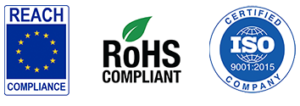SetWORX UV-35G is a 2-component, low viscosity, UV-Gel epoxy adhesive and encapsulating compound. Once properly mixed, this unique epoxy gels instantly upon exposure to UV light virtually eliminating a long fixture time. Once gelled, UV-35G cures fully after 24 hours at room temperature or faster at elevated temperatures. UV-35G is a low viscosity, clear epoxy system that is a convenient 2/1 mix ratio by volume and is available in easy to use…
rob_bdcOctober 23, 2015


